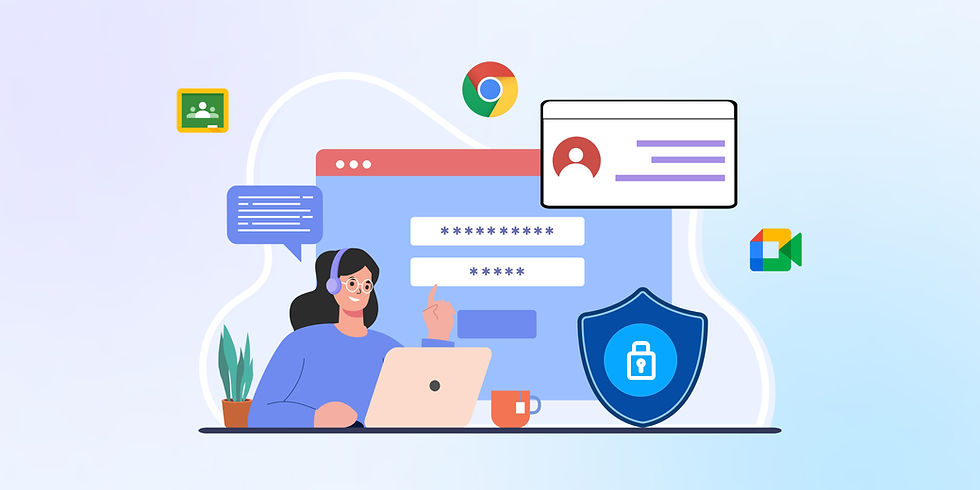Protect Your Communications with Email Security Solutions
- Nik Lipor
- 1 day ago
- 4 min read
Email remains one of the most common and essential communication tools. However, it is also a prime target for cyber threats such as phishing, malware, and data breaches. Protecting your email communications is crucial to maintaining privacy, safeguarding sensitive information, and ensuring business continuity. This article explores the importance of email protection services and offers practical advice on how to secure your email communications effectively.
Why Email Protection Services Are Essential
Email protection services are designed to shield your inbox from a variety of cyber threats. Without proper protection, your email account can become a gateway for hackers to access confidential data or launch attacks on your network. Here are some reasons why investing in email protection services is vital:
Prevent Phishing Attacks: Phishing emails trick users into revealing personal information or clicking malicious links. Email protection services use advanced filters to detect and block these threats.
Block Malware and Ransomware: Malicious attachments and links can infect your system with malware or ransomware. Email security tools scan incoming messages to prevent these infections.
Ensure Data Privacy: Encryption and secure transmission protocols protect sensitive information from being intercepted during email exchanges.
Maintain Business Reputation: A compromised email account can lead to data leaks and damage your organization’s credibility.
Compliance with Regulations: Many industries require strict email security measures to comply with data protection laws.
By implementing email protection services, you reduce the risk of cyberattacks and create a safer communication environment.

Key Features of Effective Email Protection Services
When choosing an email protection service, it is important to understand the features that make these solutions effective. Here are some key components to look for:
Spam Filtering
Advanced spam filters identify and block unwanted emails, reducing clutter and minimizing the risk of phishing.
Malware Detection
Scanning attachments and links for viruses and malware helps prevent infections before they reach your device.
Email Encryption
Encrypting emails ensures that only the intended recipient can read the message, protecting sensitive data.
Data Loss Prevention (DLP)
DLP tools monitor outgoing emails to prevent accidental or intentional sharing of confidential information.
User Authentication
Multi-factor authentication (MFA) adds an extra layer of security by requiring users to verify their identity.
Real-Time Threat Intelligence
Continuous updates on emerging threats help the system adapt and respond quickly to new attack methods.
Archiving and Backup
Secure archiving ensures that emails are stored safely and can be retrieved when needed for compliance or recovery.
Choosing a service with these features will provide comprehensive protection for your email communications.

What are email security solutions?
Email security solutions are specialized tools and services designed to protect email systems from cyber threats. These solutions combine multiple technologies to detect, prevent, and respond to attacks targeting email communications. They can be deployed on-premises, in the cloud, or as a hybrid model depending on organizational needs.
Some common types of email security solutions include:
Gateway Security: Filters emails before they reach the user’s inbox, blocking spam, phishing, and malware.
Endpoint Security: Protects devices that access email accounts by scanning for threats locally.
Cloud-Based Security: Offers scalable protection managed by third-party providers, often integrated with popular email platforms.
Encryption Services: Secure the content of emails during transmission and storage.
Threat Intelligence Platforms: Analyze patterns and provide insights to prevent future attacks.
By integrating these solutions, organizations can build a robust defense against email-based threats.

Practical Steps to Enhance Your Email Security
Implementing email protection services is a great start, but there are additional steps you can take to strengthen your email security posture:
Educate Users
Train employees and users to recognize phishing attempts and suspicious emails. Awareness is a powerful defense.
Use Strong Passwords
Encourage the use of complex passwords and change them regularly to reduce the risk of account compromise.
Enable Multi-Factor Authentication (MFA)
MFA requires users to provide two or more verification factors, making unauthorized access more difficult.
Regularly Update Software
Keep your email clients, antivirus, and security tools up to date to protect against known vulnerabilities.
Monitor Email Activity
Use monitoring tools to detect unusual login attempts or email behavior that could indicate a breach.
Backup Important Emails
Regular backups ensure that you can recover critical information in case of data loss or ransomware attacks.
Limit Email Access
Restrict access to email accounts based on roles and responsibilities to minimize exposure.
By combining these practices with a reliable email security solution, you can significantly reduce the risk of email-related cyber incidents.
Future Trends in Email Protection Services
As cyber threats evolve, so do email protection services. Staying informed about emerging trends can help you prepare for future challenges:
Artificial Intelligence and Machine Learning
AI-powered tools analyze email patterns and detect anomalies faster and more accurately than traditional methods.
Behavioral Analytics
Monitoring user behavior helps identify compromised accounts and insider threats.
Integration with Zero Trust Security Models
Email protection will increasingly be part of broader security frameworks that verify every access request.
Advanced Encryption Techniques
New encryption standards will enhance privacy and compliance with global data protection regulations.
Automated Incident Response
Automated systems will respond to threats in real time, reducing the impact of attacks.
Adopting modern email protection services that incorporate these innovations will keep your communications secure in the years ahead.
Protecting your email communications is no longer optional. With the increasing sophistication of cyber threats, investing in comprehensive email protection services is essential. By understanding the features, implementing best practices, and staying ahead of future trends, you can safeguard your sensitive information and maintain trust in your digital communications.




Comments